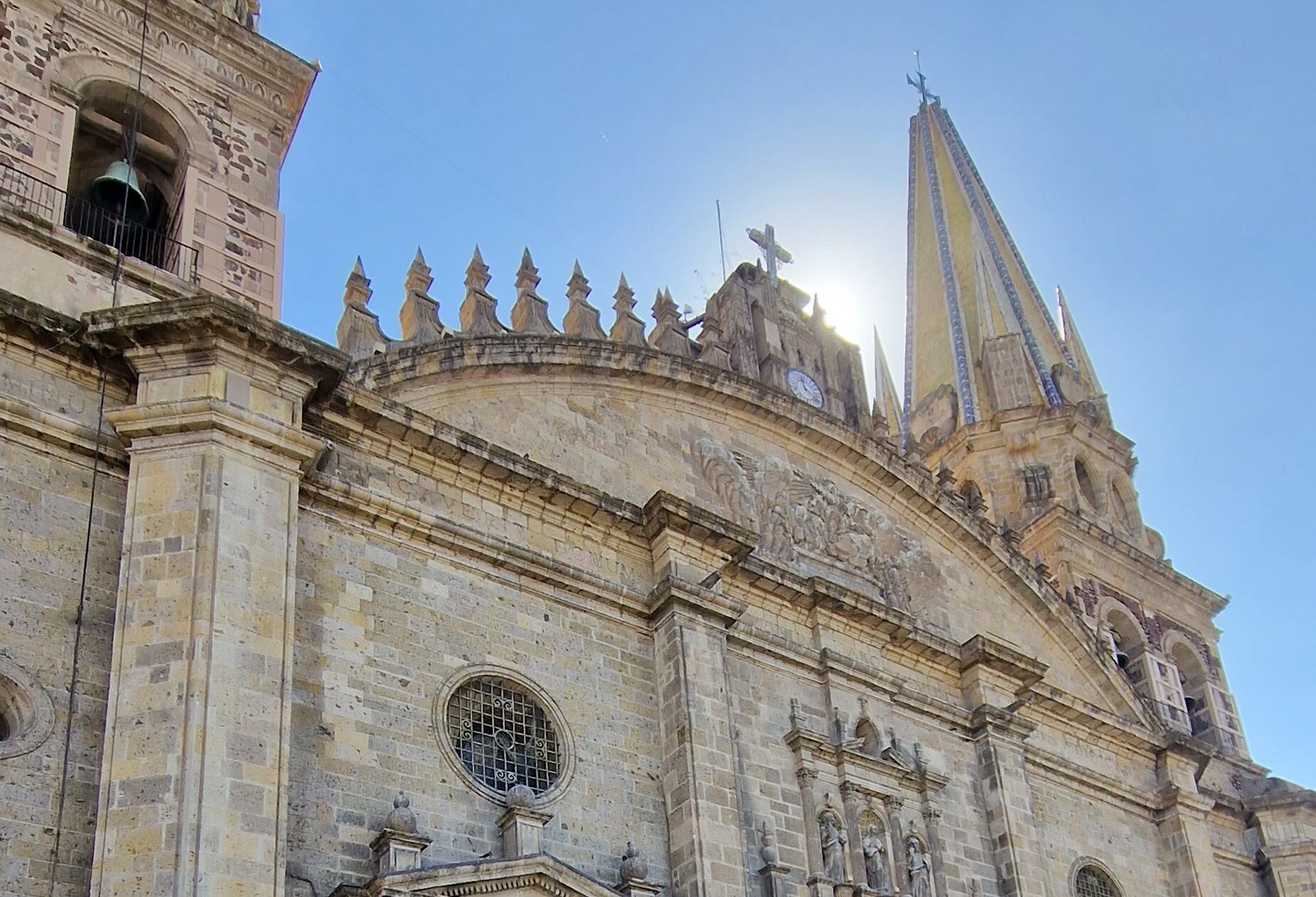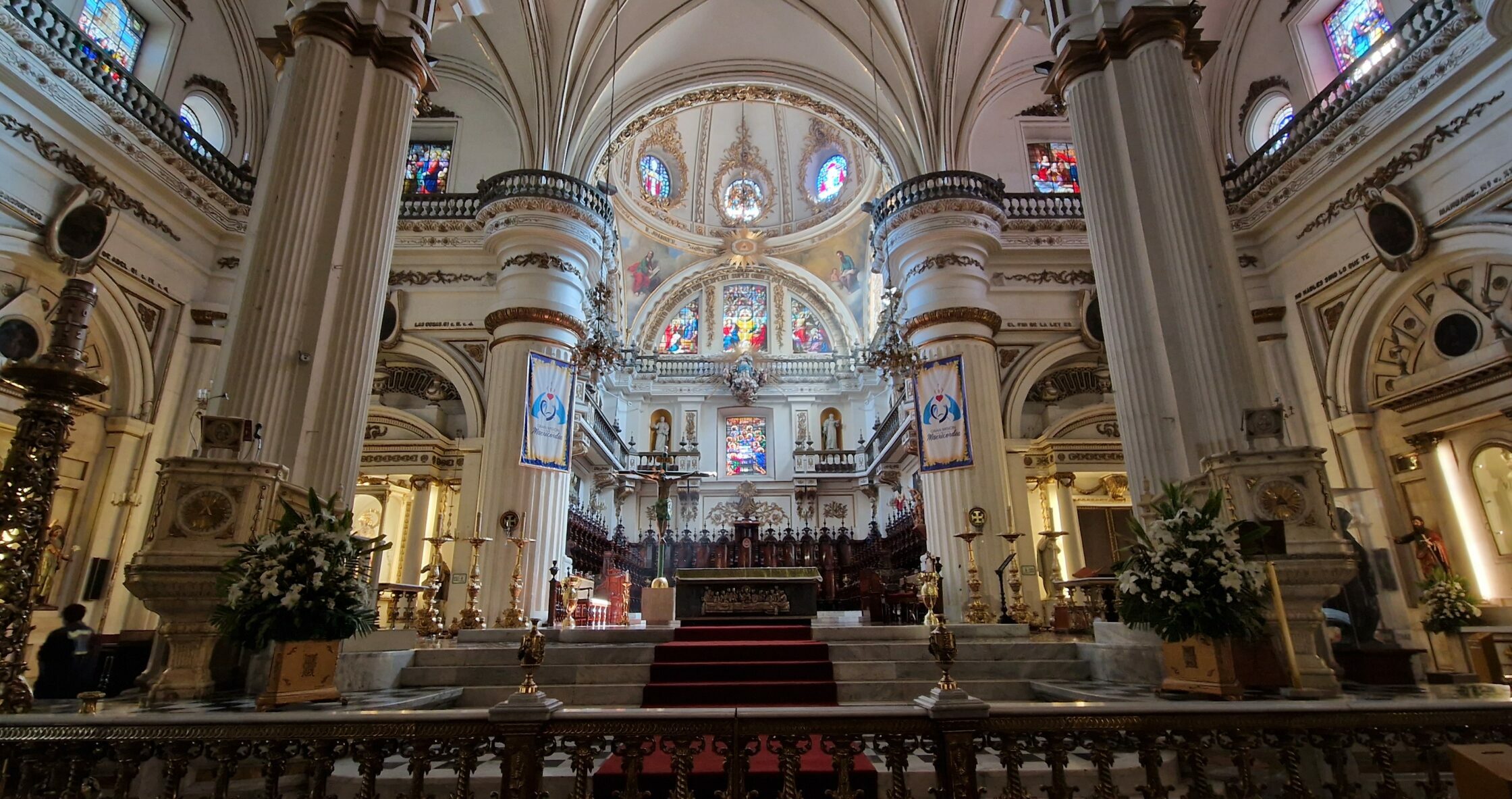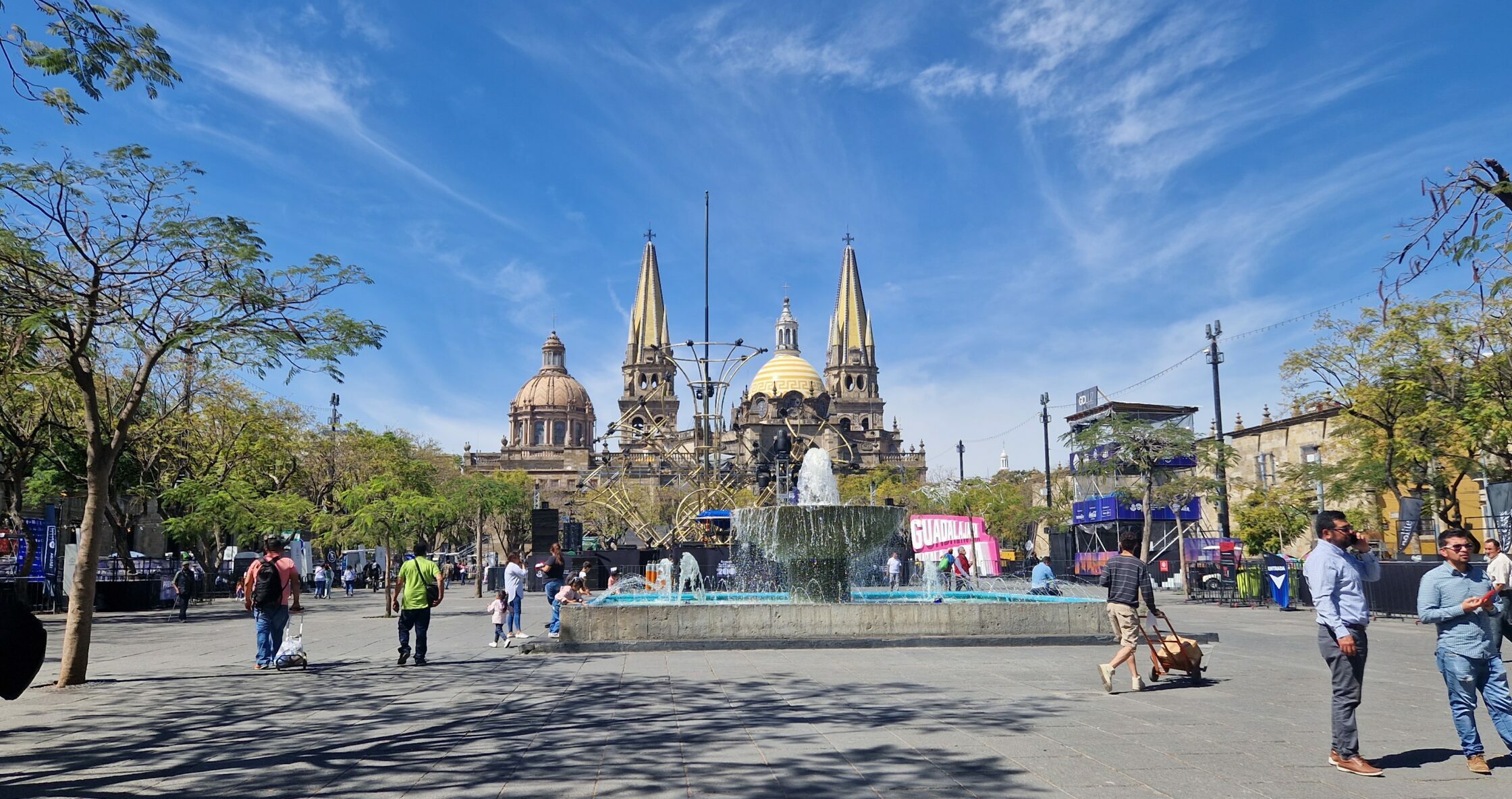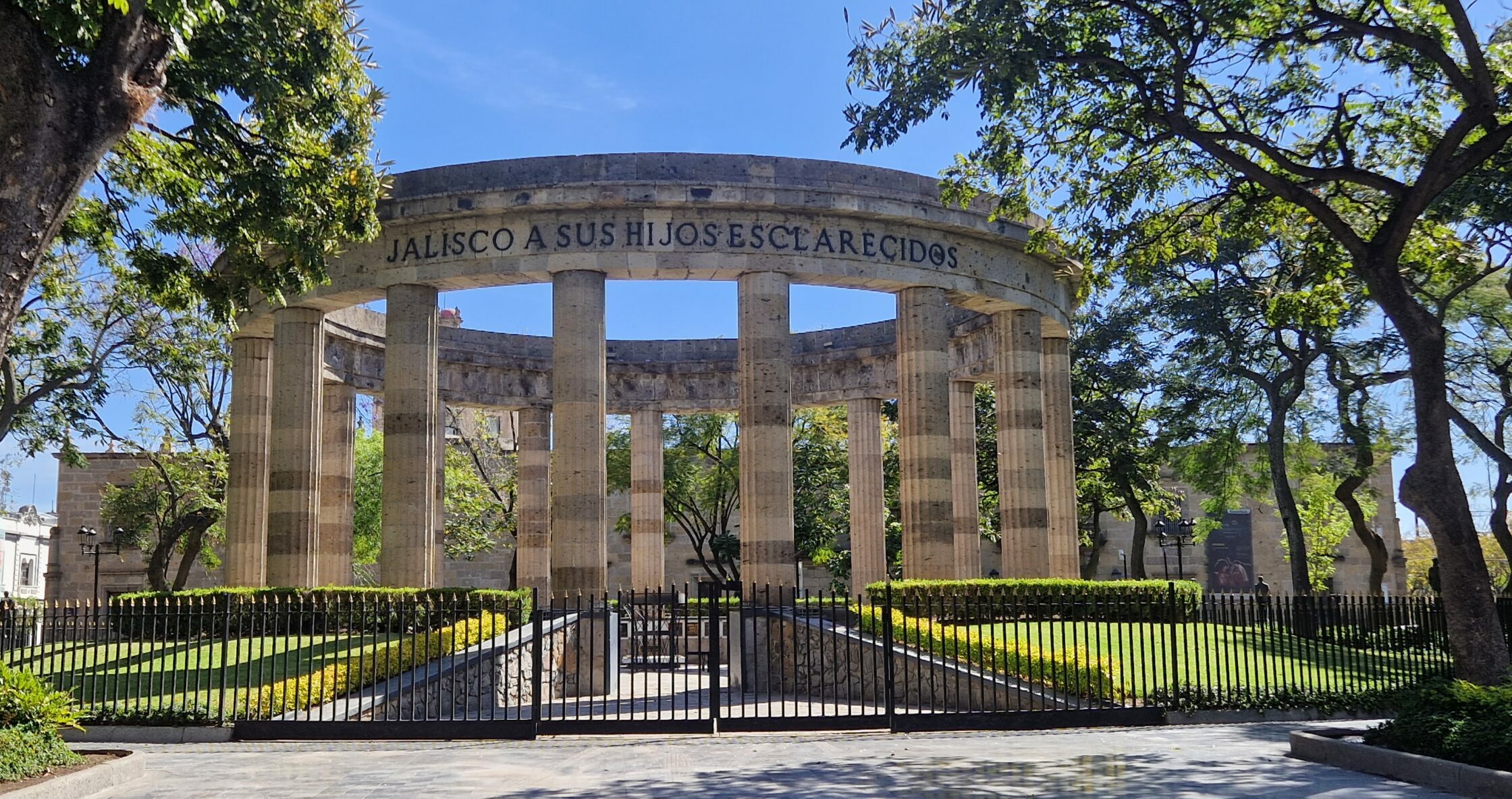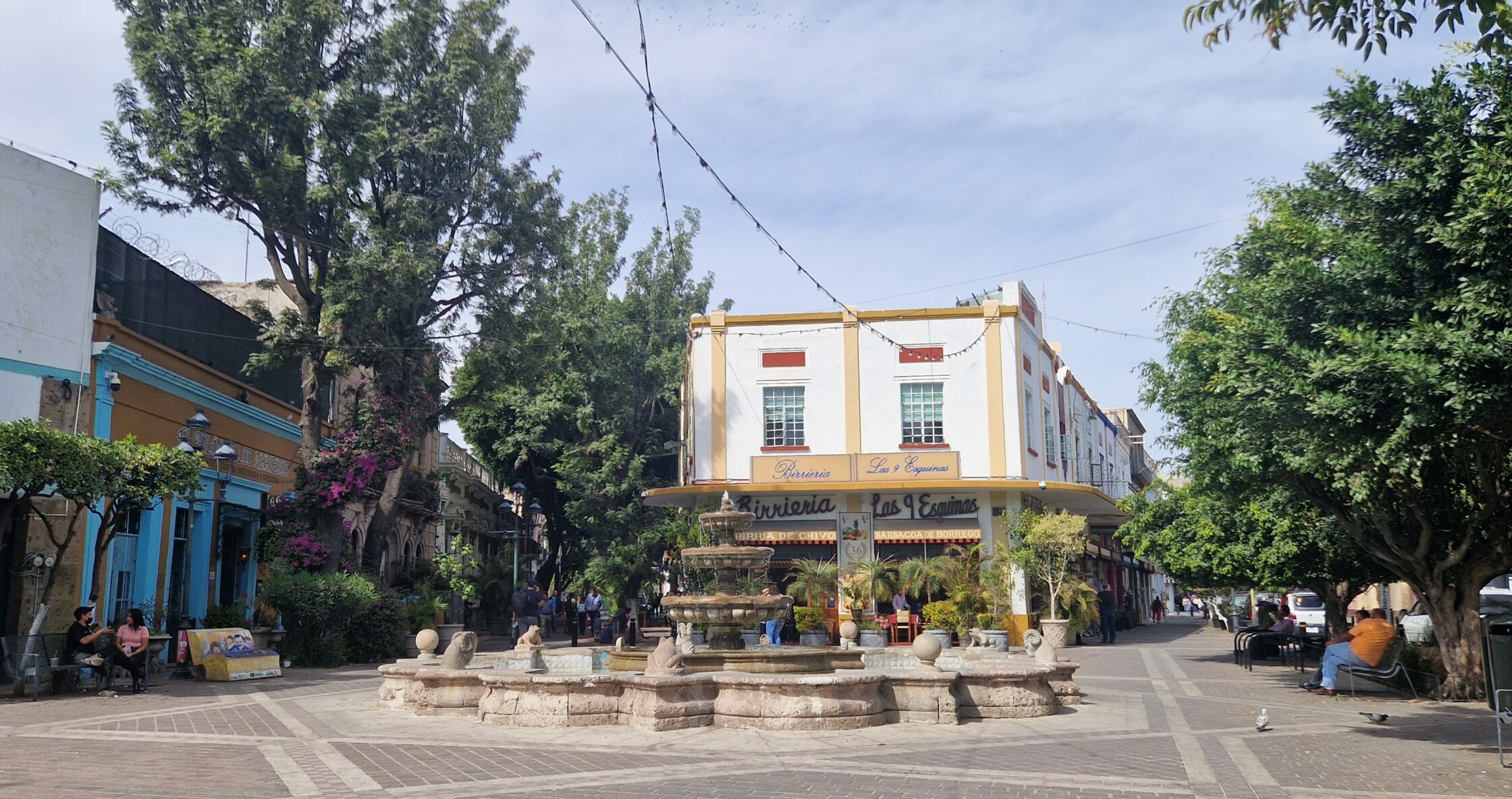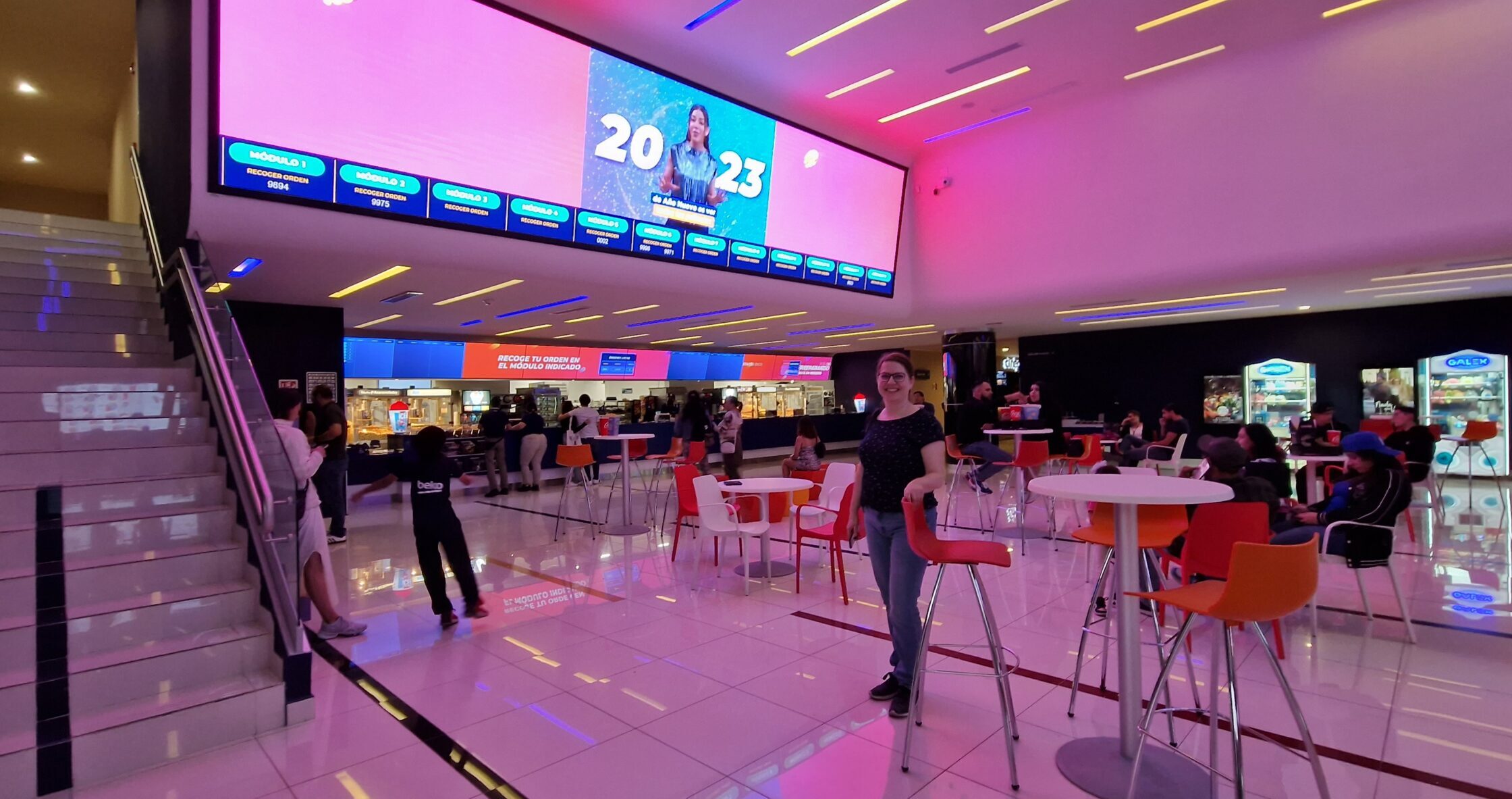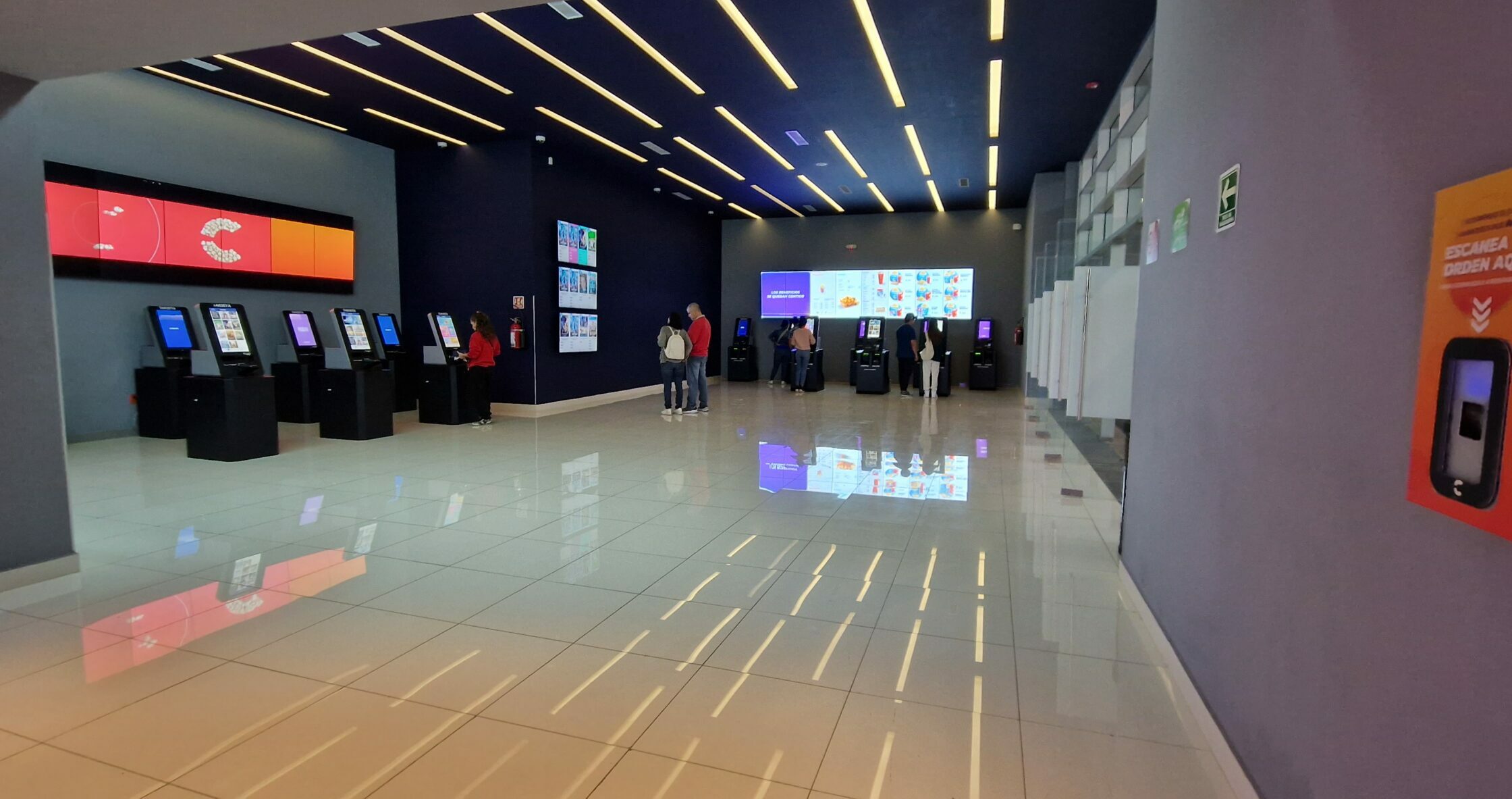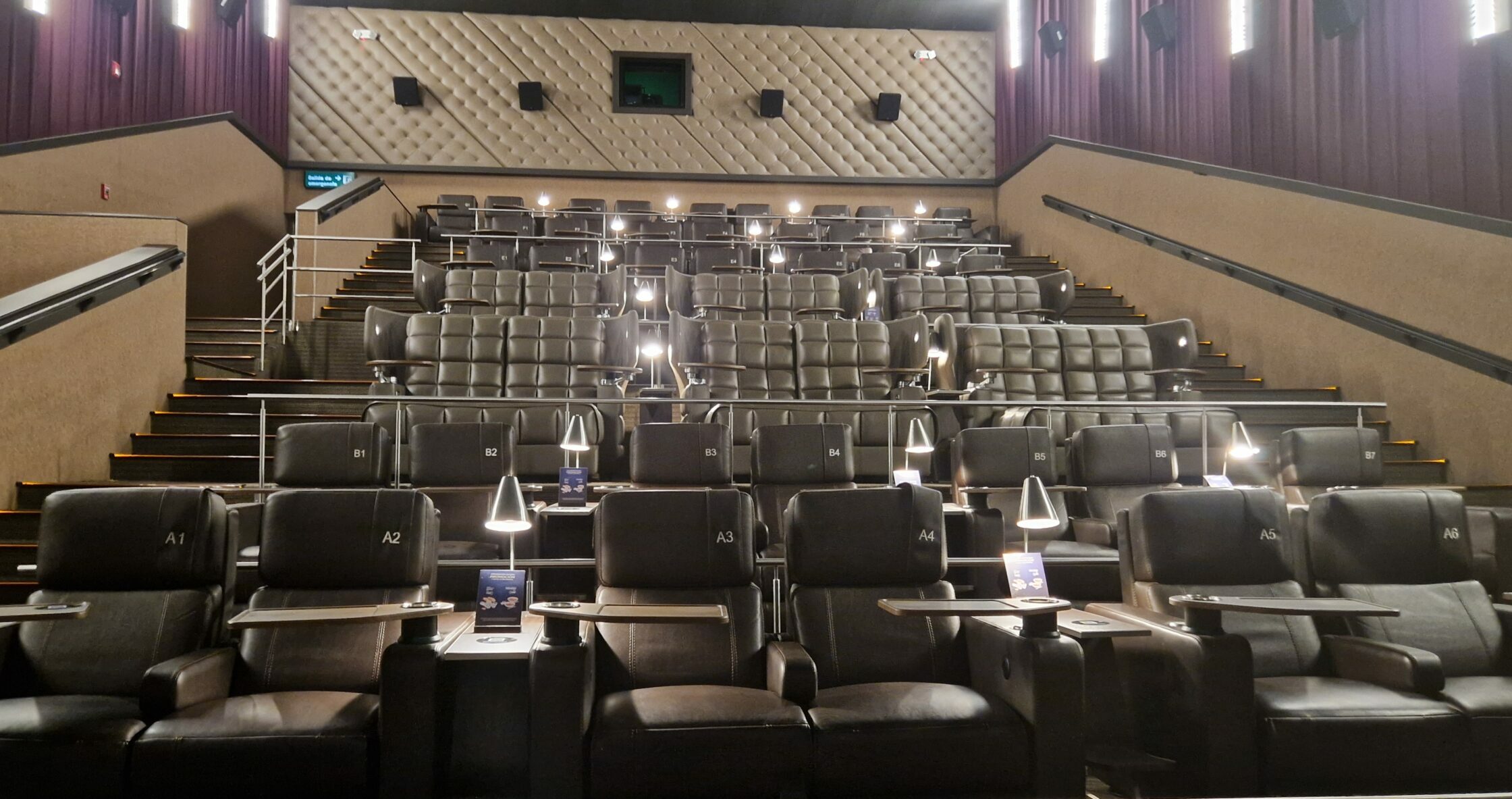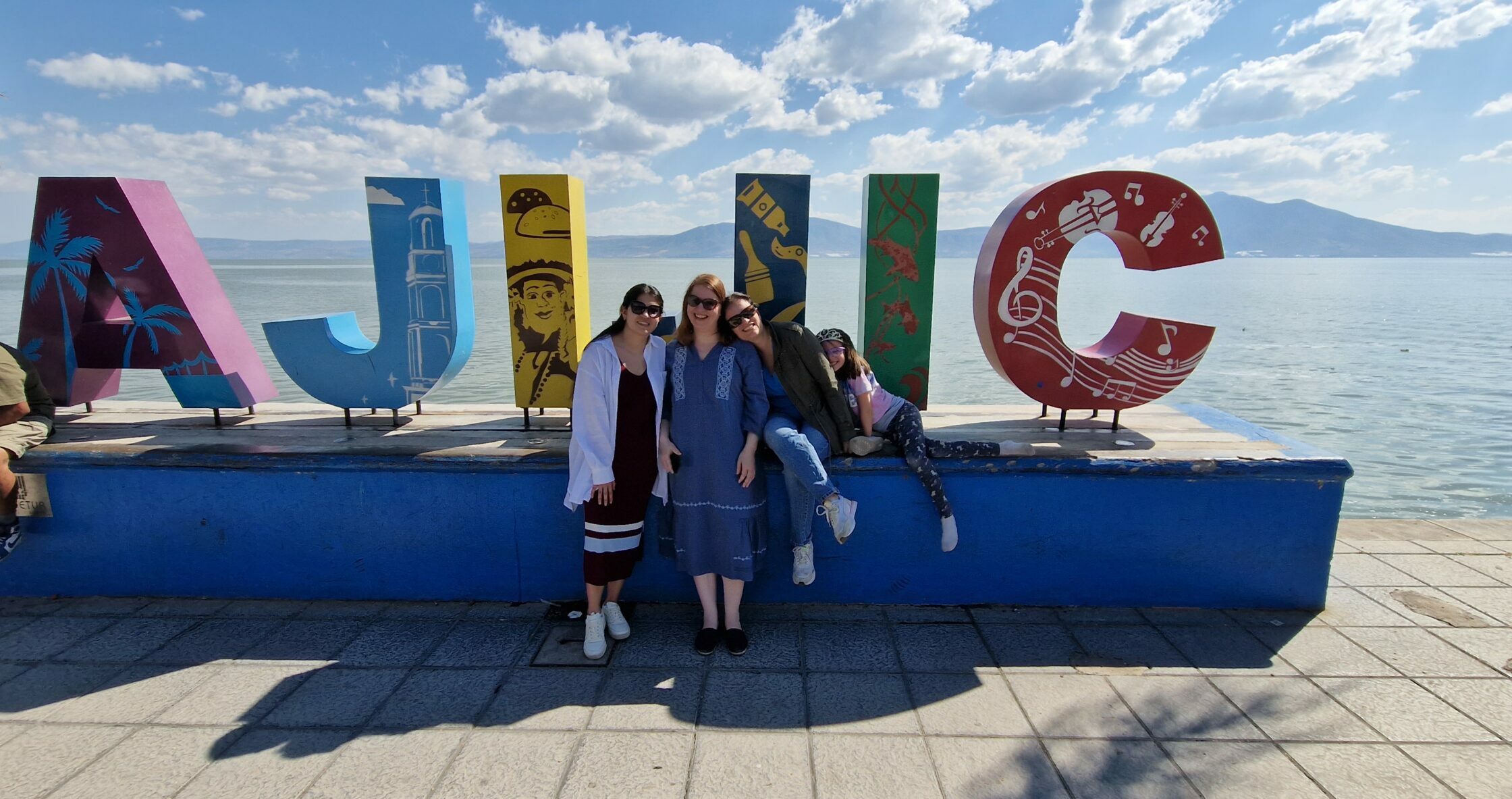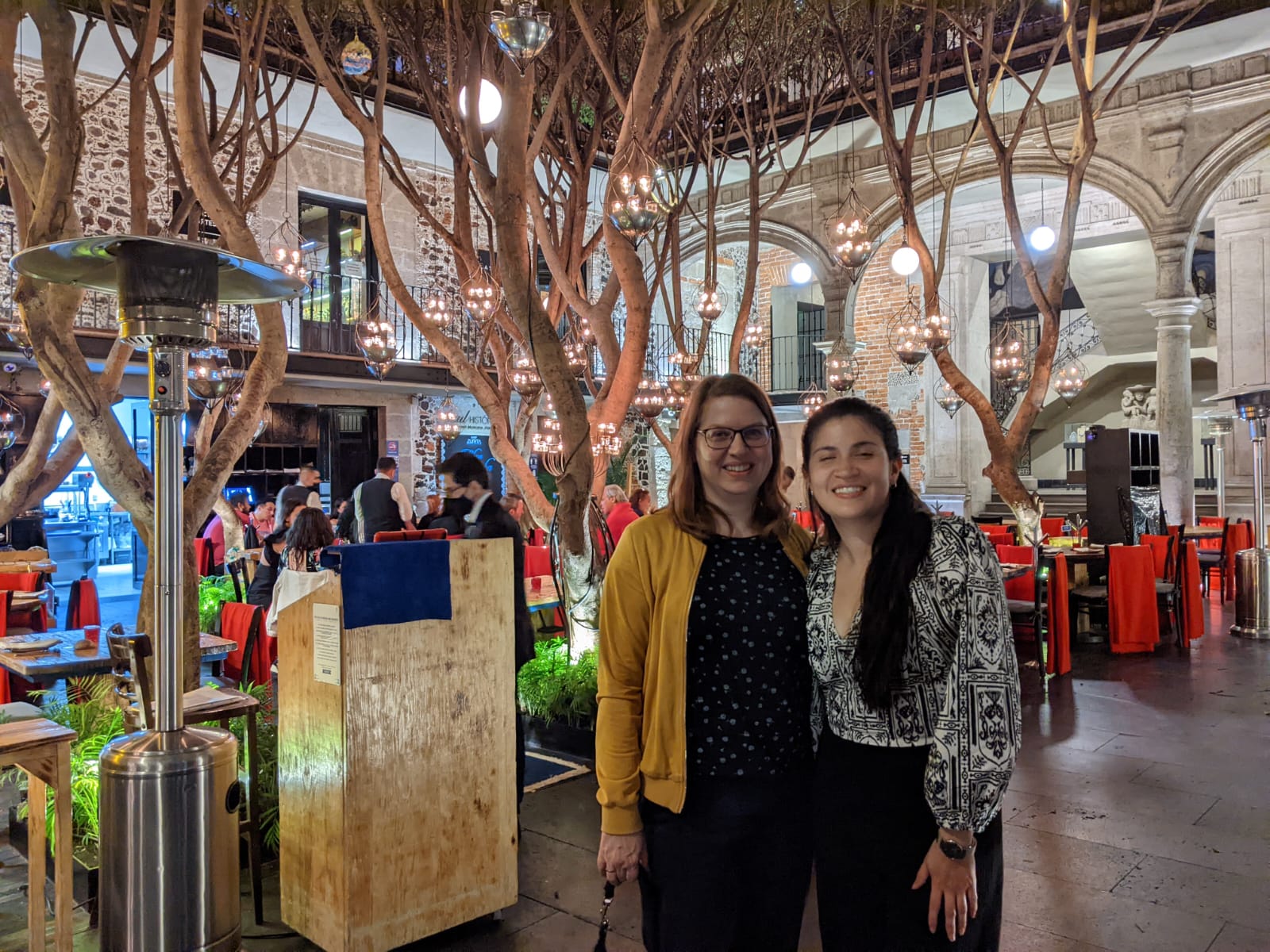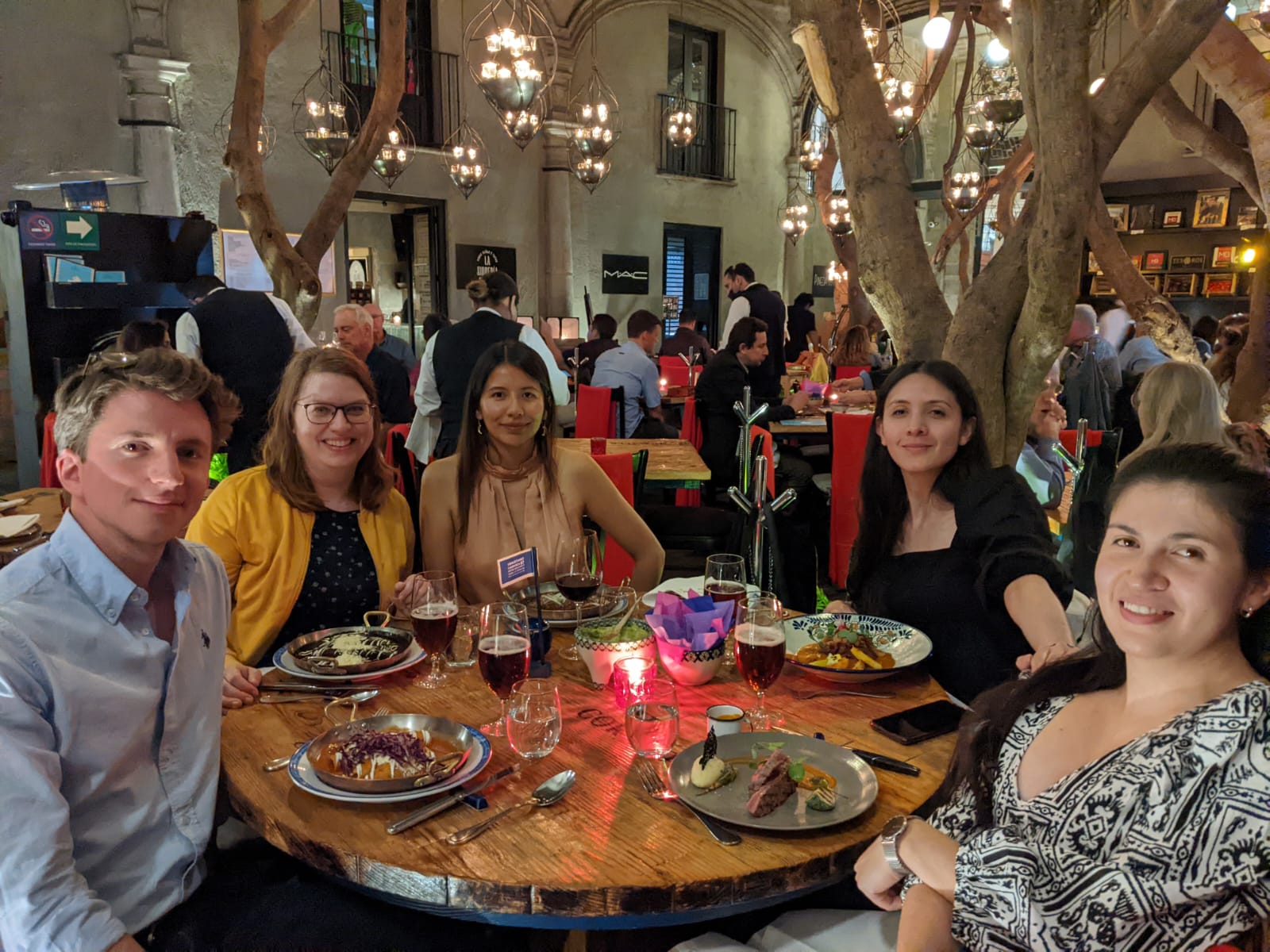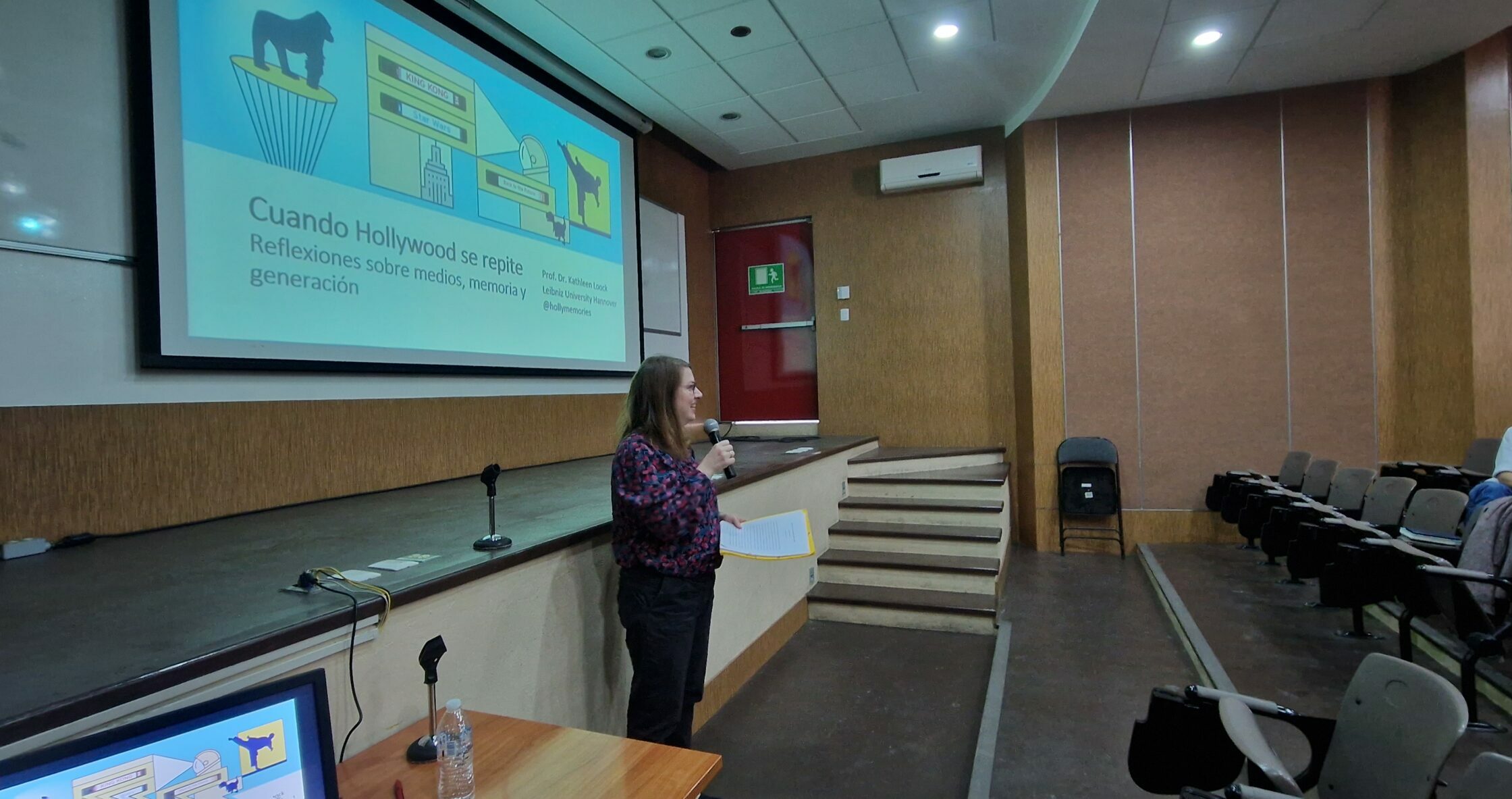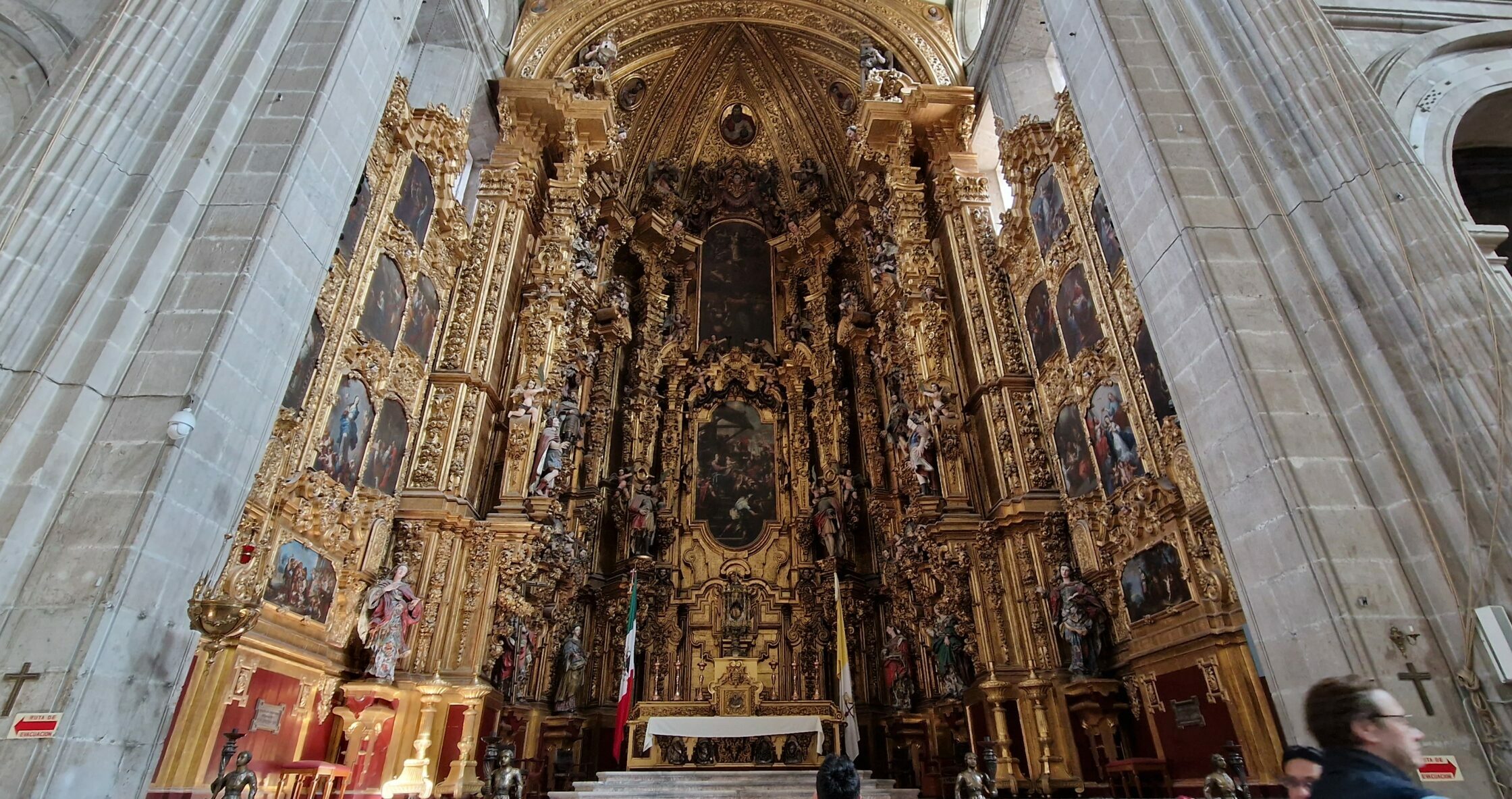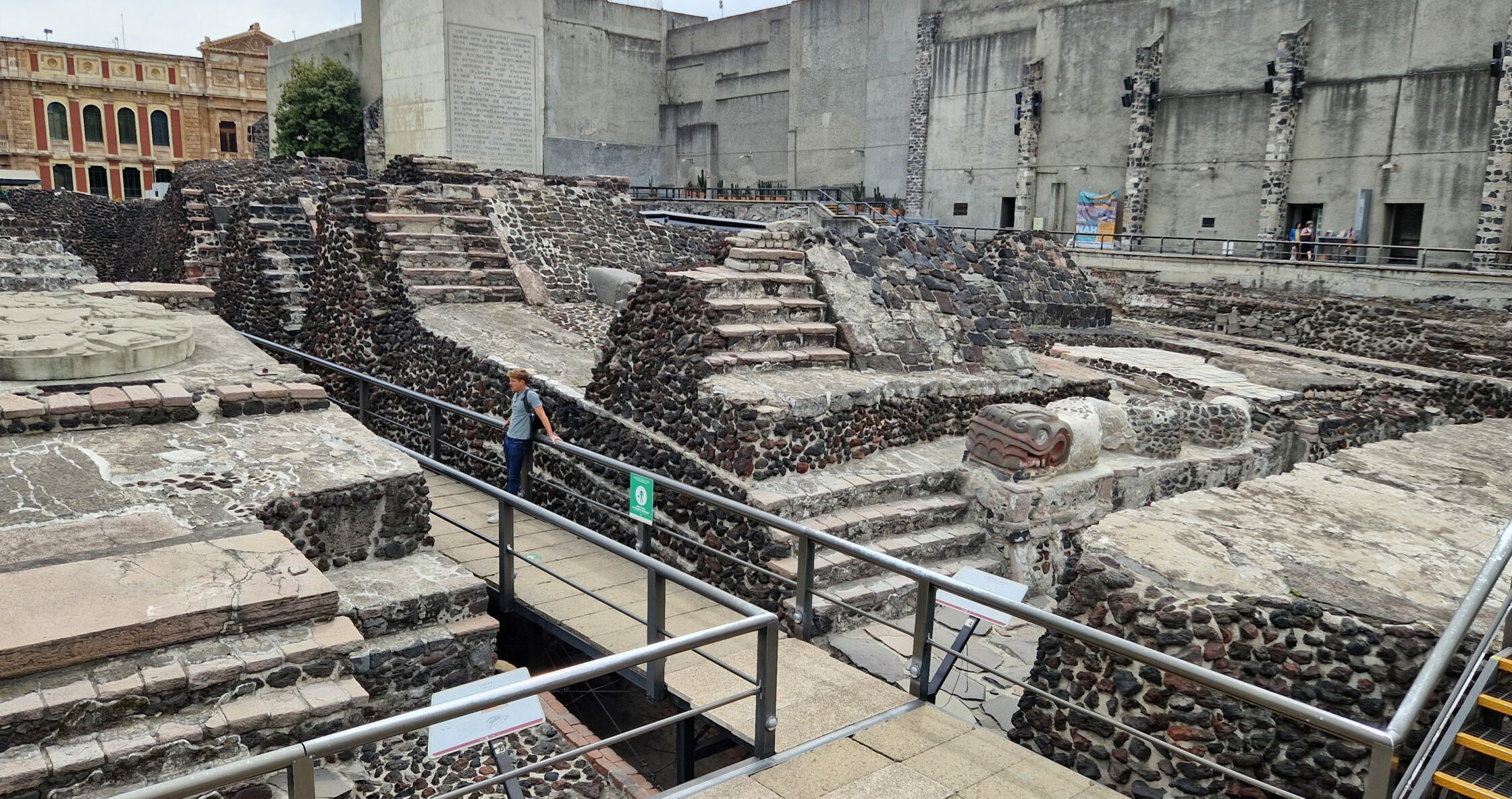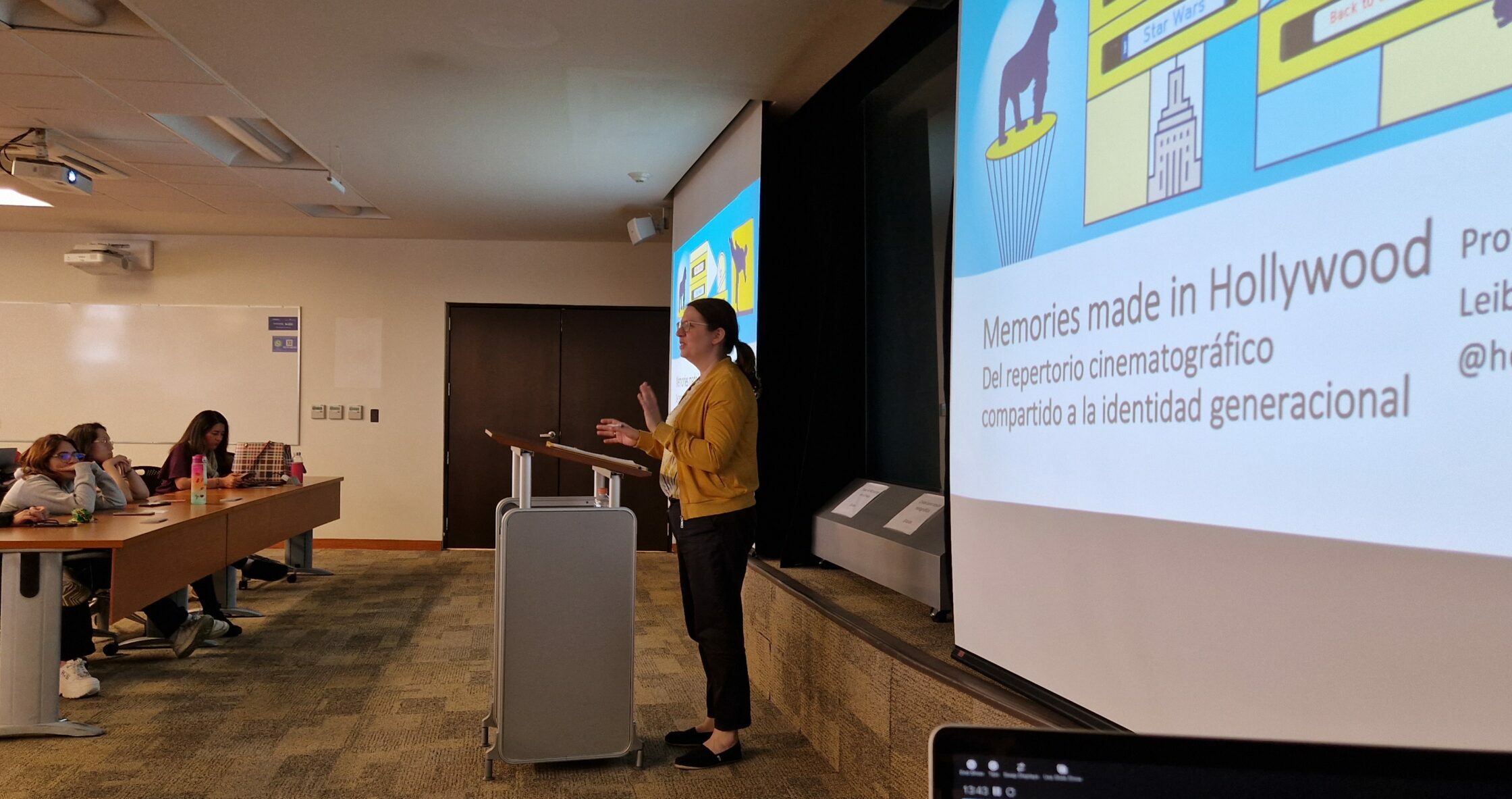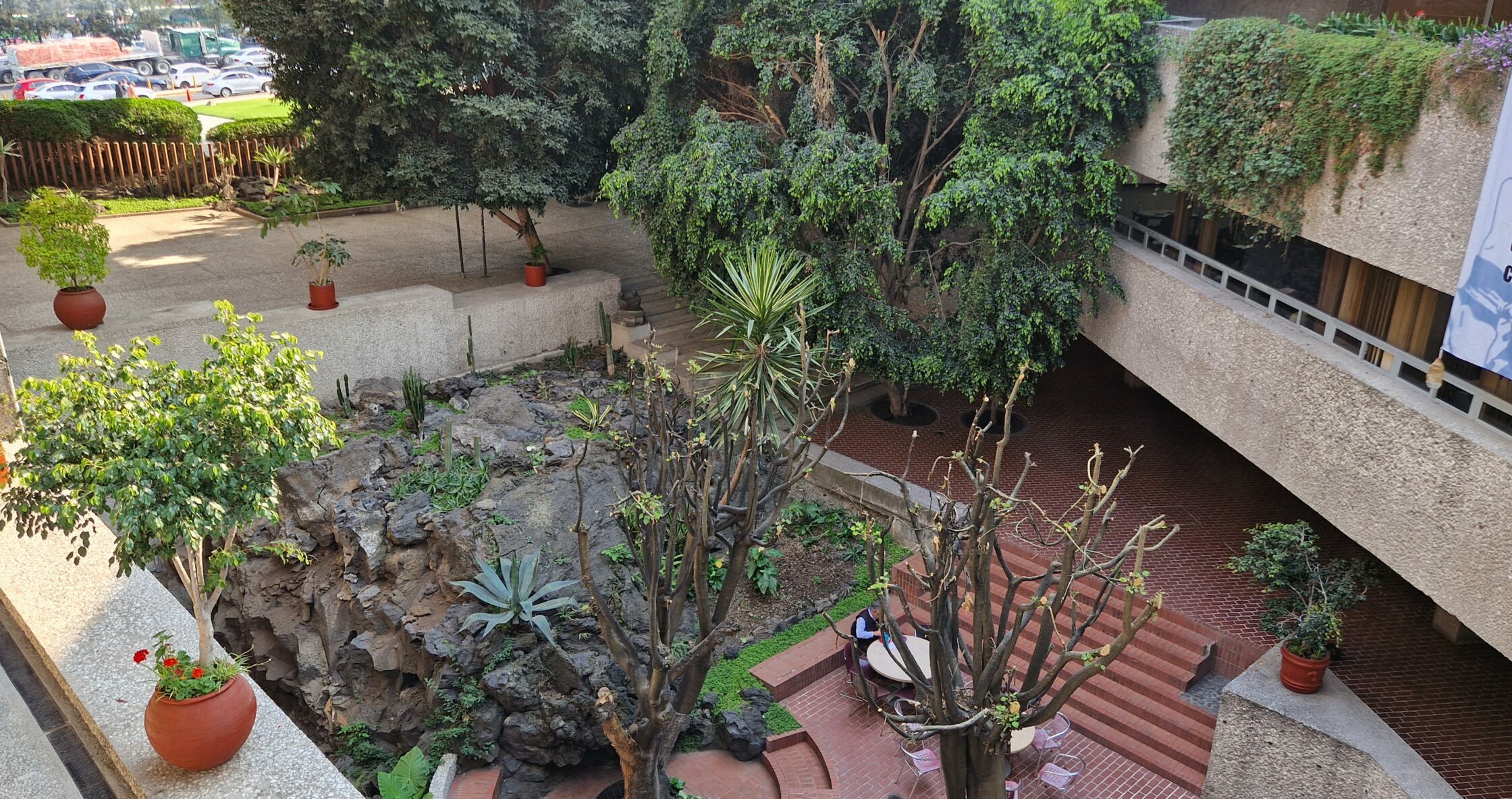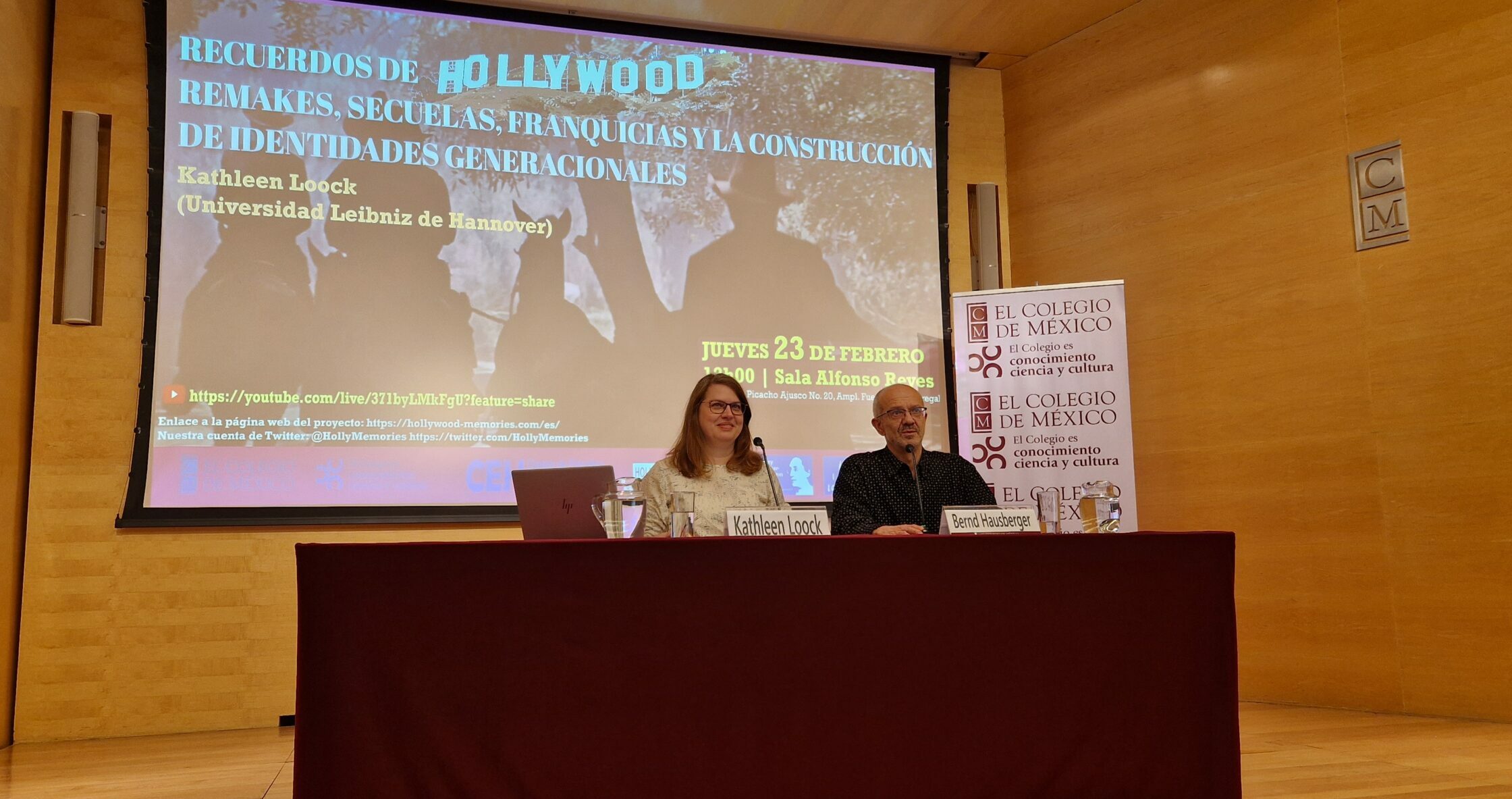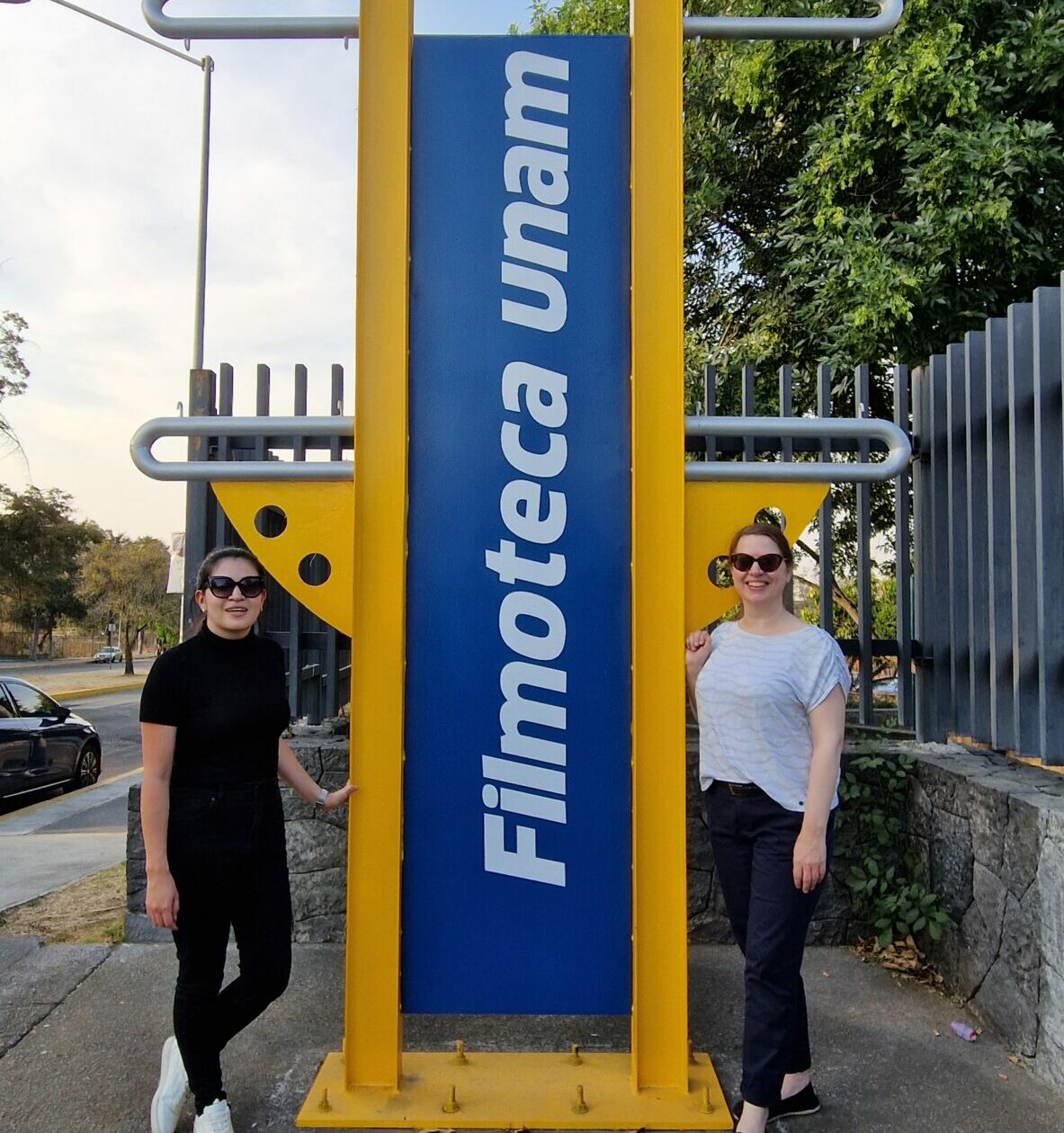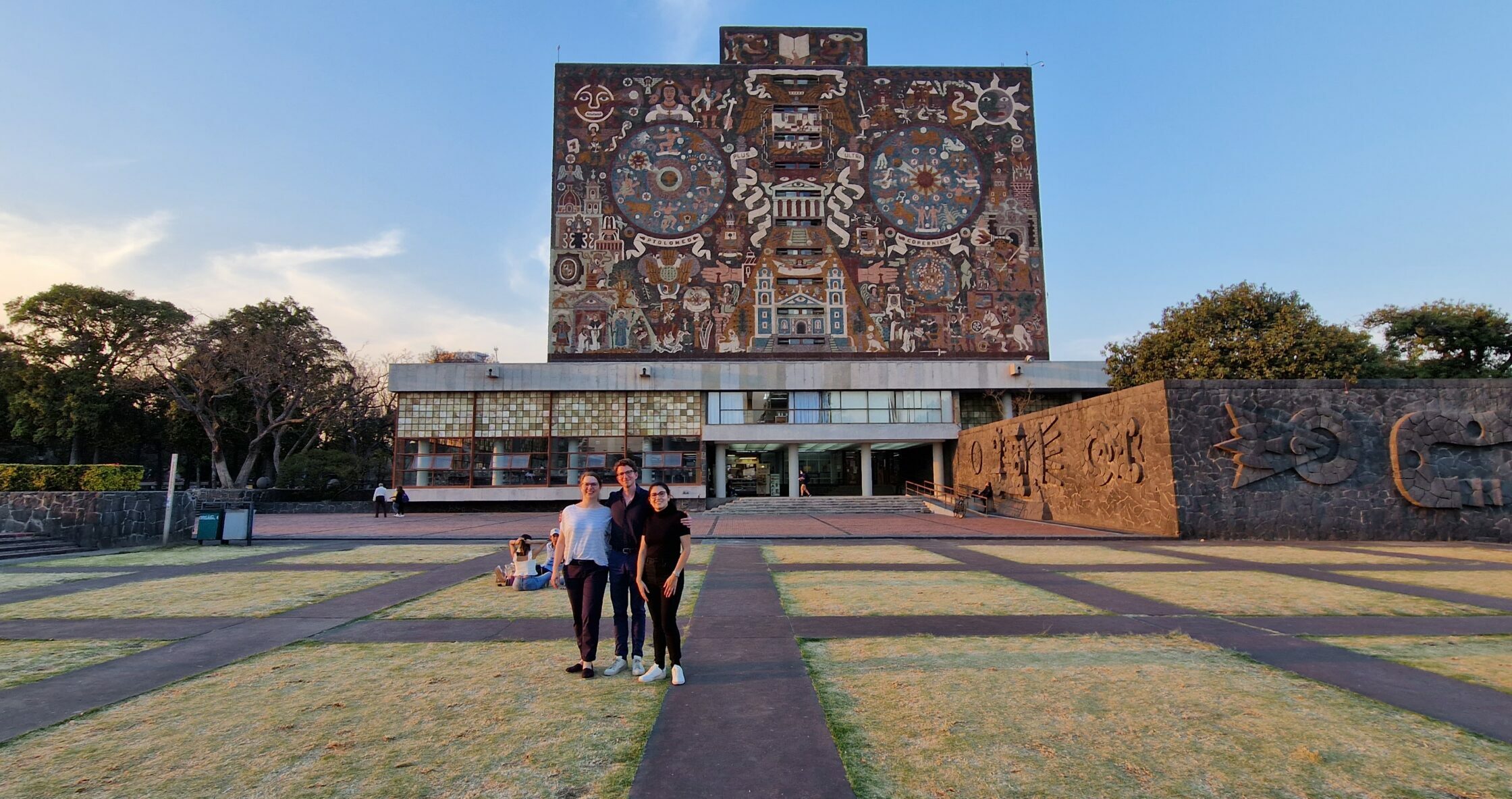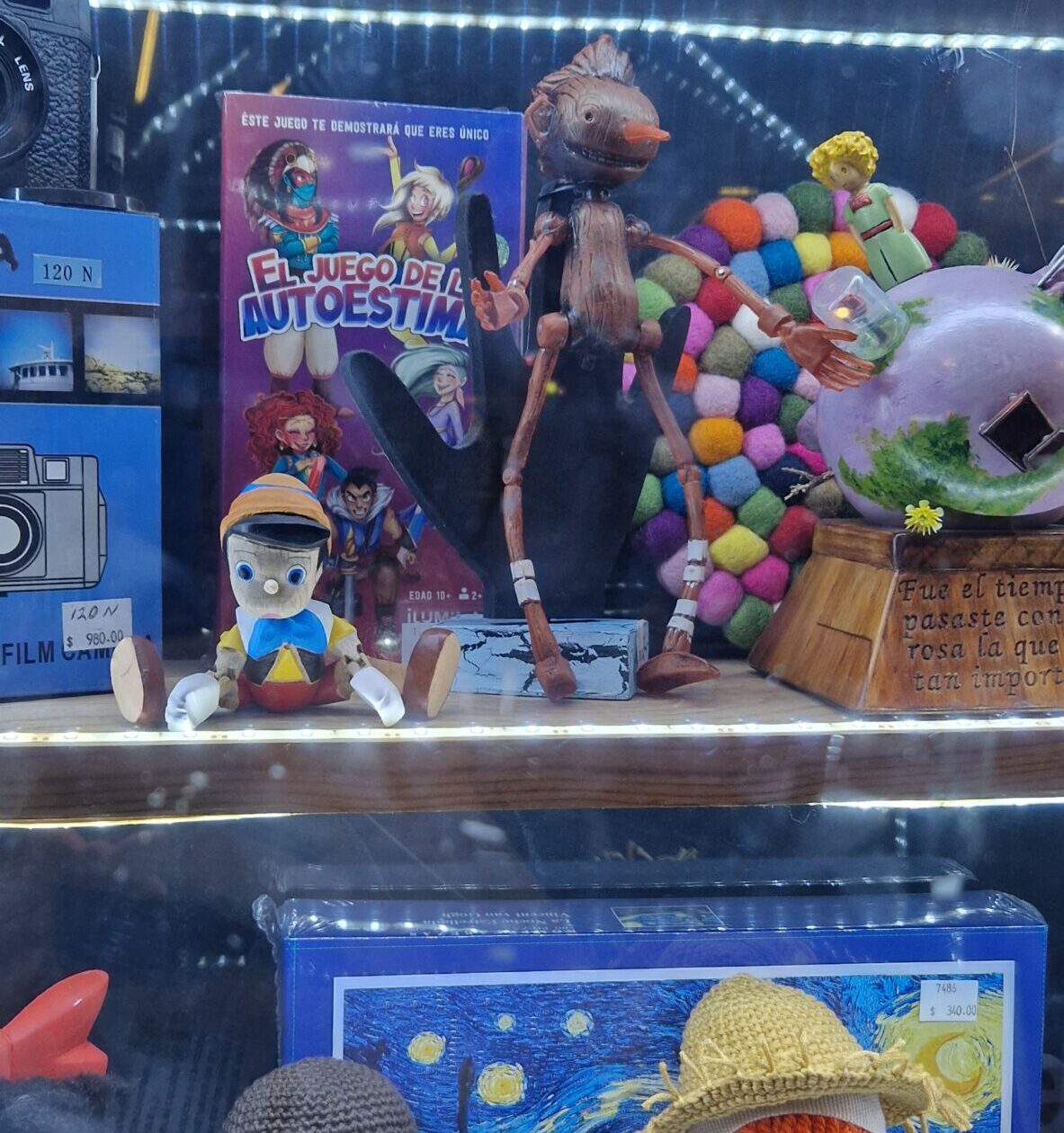
Trip to Mexico
Here we will share with you our impressions and experiences during our visit to Mexico, where Kathleen Loock and Alejandra Bulla were from February 15 to 24 presenting the Hollywood Memories project, and inviting more people to participate in the main study of the Mexico case study in different institutions in Guadalajara and Mexico City.
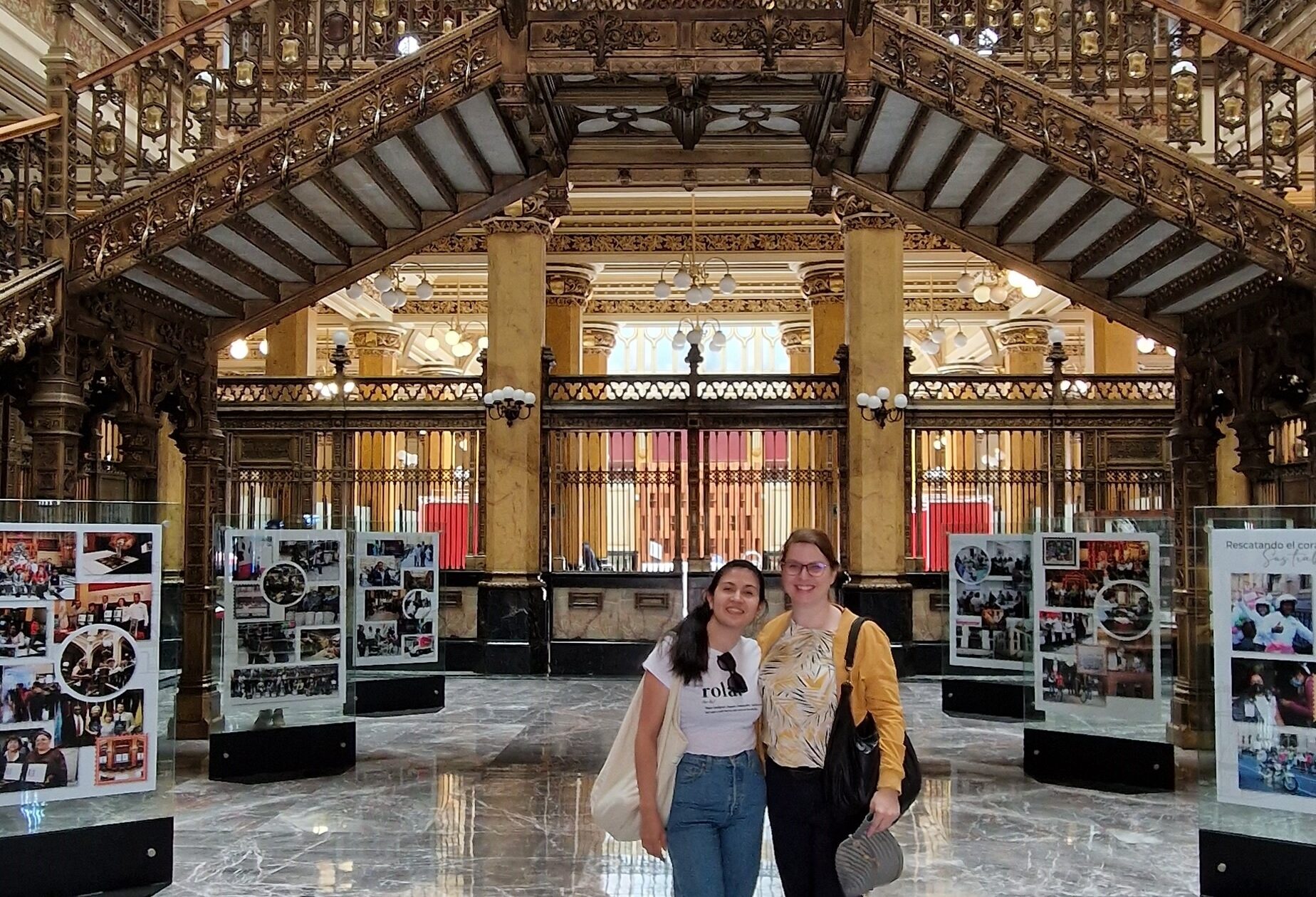
On our first day, and after our arrival in Guadalajara, we met, and finally in person, with our associate member and collaborator in Mexico, Professor Fabiola Alcalá. For our first meeting she has planned a visit to the Museum of the Arts (MUSA) which is part of the University of Guadalajara. Two murals by one of Mexico ‘s greatest muralists and a native of Guadalajara, José Clemente Orozco, El hombre creador y rebelde and El pueblo y sus falsos líderes, are exhibited there. In these pieces you can see how art, in this case muralism, speaks of the social injustices that were lived in the years that framed the Mexican Revolution.
After our visit to MUSA, we were able to discuss a bit about our future plans, about the publications that can come out of the data obtained from the pilot study in Mexico, also about the presentation that we will have in July in Mataró in the framework of HoMER, where each of us, Kathleen Loock, Fabiola Alcalá, Alejandra Bulla, and Stefan Dierkes will be talking about the Hollywood Memories project from the results that have been obtained from both the German and Mexican studies.
Additionally, we have started to work on the ideas for the workshop that will take place in Hannover in July, in which Fabiola will also participate as a panelist. There are still details to be finalized, but the idea is that the trip will start in Mataró in order to attend the conference and from there continue to Hannover for which we have in mind to present the article and the results obtained from the work done between Kathleen Loock, Fabiola Alcalá and Alejandra Bulla.
Walking tour through the historic center of the city of Guadalajara.
We ventured to learn more about this city by taking a guided tour of the historic center of the city. Due to the country’s colonial past, the Catholic church is a fundamental part of Mexican society. In what is now Latin America, and almost as a rule in all historic centers there is a church. This is due to the fact that during the colony when a new city was founded, the church had to be in the center of everything. In the case of the historic center of Guadalajara this rule is fulfilled, but it goes one step further to the idea of the main square, as this is designed in such a way that from an aerial view of the area you can see that there are four squares surrounding the church taking the shape of a cross.
The marks left by the colony, apart from urban planning and architecture, can be seen in the symbols, in its flag and coat of arms, both inspired by the Spanish kingdom, but which remain unchanged to this day. We can also see them in the distinction of race and class. In this tour we have taken, they explained to us that, in the city, where the Calzada Independencia (Avenue Independencia) crosses today, there used to be a river, the San Juan de Dios river, and that, although it serves as a natural border, it divided its people, for it divided the region into social classes with those who lived on each side of the river. Marginalizing those who lived in the center to the periphery, being the indigenous and other lower castes who lived there, and those on the other side of the river were the Spaniards or Creoles who were representatives of the wealthier classes. Precisely in this part of the tour we had a reality check, in this area we saw many children in the streets begging for money, a very sad image of the reality of many in the country.
The tour has ended at the San Juan de Dios market, which is the largest roofed market in Latin America, and that due to its magnitude we have not completely toured afraid of getting lost, but we did take the opportunity to try a typical drink of the region, the tejuino, a fermented corn-based drink served with ice, salt and lemon. And with tejuino in hand we went to a very popular neighborhood of the city called Las 9 esquinas. Its popularity is due to its birria restaurants, a typical dish of the region.
Something that caught our attention throughout the tour was the wide presence of muralism in the Mexican cultural sphere, which carries a very important historical legacy since it not only functioned as a catalyst to manifest social and political discontent and a clear sign of resistance, but also sought to assist the Mexican people to find their identity, the identity of a people that has lived continually at war. This seems to us worth mentioning since we see a similarity with what was also cinema at the time, since this was also a tool used to forge identity at the time. Clearly there are differences as is the access to both, but it makes us wonder how Mexicans may seek a space through the image to see themselves represented and understand their national identity.
On this day we had the privilege of visiting the José Guadalupe Zuno house, which is part of the University of Guadalajara and heritage of the city. The lecture given by Kathleen Loock to the network of REDIC researchers, which had a couple of dramatic moments such as the activation of the seismic alarm for which we had to evacuate the room, fortunately it was all an accident and the lecture could be resumed; also, the electricity failed at some point, but it was not for long, and in the minutes while the technical team brought everything back to normal, Kathleen could continue with the talk. The discussion has given us the opportunity to expand further on the Mexico pilot study and we have taken note of the suggestions that have been made to us about the project.
After the talk we had the great opportunity to have a guided tour of this house museum, which belonged to José Guadalupe Zuno, reason why it now bears his name, he was governor of the state of Jalisco from 1923 to 1926 and was the one who re-founded the University of Guadalajara. Besides being involved in politics, Mr. Jose was also a great artist, as we have seen in the small artistic details that surround the house he built. His designs emphasize the syncretism that exists between Spanish and native culture, as well as his affiliation with Freemasonry. The house was donated to the University of Guadalajara and now houses the historical archive in its basement.
That same day and in a more informal context we were able to talk with some people who attended the presentation, we talked about the differences of doctorates in Mexico and Germany. In Germany it is done without the need to take courses, but one learns at the same time as one advances in the research, while in Mexico one must take classes during the first three years of the doctorate, leaving one year to finish the thesis, although one has to write it during the 4 years, the time between classes and work related to the classes allow little space to advance during the first 3 years.
After the interviews done in the pilot phase of the study, we were left with the doubt of how the movie theaters in Mexico are, since everything they told us was unknown to us, we decided to go to one of the largest cinema chains in Mexico and in the world. We went to Cinepolis, which is divided into two types, Cinepolis and Cinepolis VIP, as we did not know a VIP room, we went to see them. Unlike in Germany where movie theaters are not normally located inside shopping malls, but are in their own building, in Mexico the movie theaters are mostly in malls. We have gone to La Perla; this is a new mall which is aimed mostly at upper-middle class people. We arrived first to what we thought was a counter to which we found out that it was for members only, we were told to go to the machines to buy tickets, but after a lot of searching we realized that the area we were in was Cinepolis, not Cinepolis VIP. We found the VIP section that was very hidden at the back of the store, almost alluding to the class distinction between rooms. A distinction that became obvious as soon as we entered the VIP area, the atmosphere was completely different, it was no longer like a food court as we had seen before, this was a lounge type area. Another big difference was how to buy the tickets, it was no longer a machine that served us, there was a person selling the tickets. The differences did not stop there, we went to buy our popcorn at the counter, but there we were informed that the food is purchased inside the theater. Yes, the VIP lounges have waiters/waitresses that you call from your seat with a button, they go to your seat, take your order and later take it to your seat at any time during the show. And as if the experience wasn’t already becoming a little extravagant, there are two types of chairs in the lounge: “normal” VIP chairs, which are already quite large and comfortable, but there are also lounge chairs, which look more like a bed than a chair.
The city of Guadalajara has been expanding over the years, which has led towns that were adjacent to the city to become parts of the city itself. This has happened to San Pedro de Tlaquepaque, the region we visited on this day. The truth is that one day is not enough to visit all the tourist attractions in the area. We were able to walk along the Andador La Independencia, which is a pedestrian street where there are different artistic displays, from the sale of handicrafts to large art galleries. Something very striking that we have noticed in Mexico is how the food is part of every corner of their spaces, between stores and galleries we have found very nice restaurants, the one we have entered in particular had a colonial architecture, with a courtyard in the center which had its own fountain, The tables were all around giving the perfect space for entertainment, there we had the fortune to see for the first time mariachi femenil, which is a mariachi group consisted exclusively of women, we have been amazed with this style of mariachi, as we only knew male or mixed groups. We have been told that it is traditional in this region. We also noticed that this was an area visited by international tourists, because upon entering the restaurant they asked us our nationalities and then brought a flag from each country to our table.
The central square has the traditional structure, a kiosk in the center of the square which is surrounded by buildings such as the church and other period buildings. In Tlaquepaque, El Parian is one of the most visited places, which was a market and according to the official site of Tlaquepaque it also had a “pillory” from the colonial times. Nowadays it houses different restaurants, its fame comes due to the mariachi presentations and to the magnitude of the establishment, which corresponds to an entire block, it has become one of the most important tourist centers of the area.
On this day we went to Lake Chapala. This lake is the largest in Mexico, which supplies water to the metropolitan area of Guadalajara and its surroundings. Due to its dimensions, it is understood that there are different towns on its shore, we visited Ajijic. This small town has a very particular history, as it is one of the few regions in the country where English is spoken. Due to a high migration of US Americans to the area, the town has changed its ways in order to adapt to this migration. Curiously we have encountered different Americans who do not speak a single word of Spanish, so in most of the commercial establishments you will find that the people who serve communicate in both languages, Spanish and English. It was a very nice place to end our visit to Guadalajara.
Travel day to Mexico City
It was a day to travel and get settled in the hotel. We also had our first face-to-face meeting with our associate member Nicolas Licata. He had invited us for dinner at the Restaurante Azul Historico, it is located in the center of the city so this day we had our first contact with the city’s famous chaotic traffic. It was a beautiful restaurant; it was the perfect example of modern integration with its colonial past. In the central courtyard which is where most of the tables are located there is also a huge tree from which candles hang, providing light to the place. The food was traditional Mexican and they even had a mezcal menu. The mezcal is served in glasses made from the seed of the jícaro fruit, which is why they are called jícara and are very traditional in Mesoamerica.
UAM presentation: this day was the most chaotic of our week in Mexico City. Unfortunately for us and our patience, the Azcapotzalco venue where the presentation took place is located in the north of the city, while we were staying in a southbound hotel. Already having an idea of how complicated the traffic is in the city, we anticipated two hours in order to arrive with spare time. To our surprise the two hours we were stucked in traffic. Although looking at data about traffic in the world and Latin America CDMX does not lead the list in worst traffic, and according to Tomtom this city is ranked 13th in the world, after Latin American cities like Lima and Bogota.
Aside from our experience navigating the local traffic, we have encountered a large and open campus, our contact at this University, Master Rocío Romero helped us extensively on this day. There were a couple of inconveniences with the room that had been originally reserved for the presentation, this led to a more limited time for the presentation. Nevertheless, and without having been able to have the round of questions, we were able to attend a class of one of the professors attending our presentation. It was a small group with approximately 15 young students who, according to our understanding, were in their first semesters of their undergraduate studies. On this occasion we had the opportunity to change the dynamics of a lecture to the dynamics of a classroom, where we gave a class talking a little about research, remaking and the history of cinema in Mexico. All the students were very receptive to the topic, asked questions and expressed their interest in the project.
After our visit to this university, we went downtown to visit one of the most famous restaurants in the city “Café de Tacuba” which we loved. Having spent most of the day in traffic we didn’t have much more time to walk around the city, but we did have time to stop by a movie store. It was fascinating, it was a fairly large store that at the entrance showed recent Hollywood movies, as we went along, we started to find older movies, and we were surprised to find that the back wall of the store was dedicated only to Mexican movies, half to more contemporary movies and the other half to movies from the golden age. The quota of Mexican cinema in the country is manifested in this space, representing only a fraction of all the products that were there. Clearly, we had to make a couple of purchases there.
We decided to take a walking tour of the city center in the morning since the presentation that day was to be given at 4:00 pm. We started by visiting the Metropolitan Cathedral of the Assumption of the Blessed Virgin Mary of Heaven, which is the perfect example of the palimpsest of how the city has been built over the pre-Columbian cities. Together with Hernán Cortés, the other conquistadors decided to found the church over the Templo Mayor of the Aztec city of Tenochtitlán. This carries a very strong connotation because it is the way they showed the power of the kingdom of Spain in the newly conquered land. In addition to this, they used the stones of the temple that they destroyed for the construction of the church. Recent excavations show everything that lies beneath the city, apart from the city having been a water territory, which speaks of the infrastructure problems of the city since being built on fill does not have a very stable soil and being in a geological fault zone seismic activity makes this a challenge in construction.
On the tour we have passed by the front of what was a movie theater founded in 1948, and as described in infobae “The facade of the cinema had an impressive Art Deco style door, and a brightly colored marquee…” but due to the decline of cinema in the 50’s this movie theater was also declining, to the point that in the 90’s it began its operations as a cinema for adults and to this date it continues to operate that way. A phenomenon that seems to be repeated in other Latin American countries.
The historic center of the city speaks a lot about how the period of conquest and subsequent colonization of the region happened. During the conquest, evangelization was one of the main tasks for the conquerors, so the distribution of the city has several squares, where the mass evangelization of the natives took place, with the priest going out from high points in the square, like balconies, to address the natives from there.
Mexico City is one of contrasts, the Catholic religion brought from Spain with the colonizers took root with such force in the area, that even today Mexico would be the second most Catholic country in Latin America, according to La Gaceta de Mexico, 77% of the population is Catholic, although this number is declining, says the newspaper. On our tour through downtown we could not help but notice the high presence of statues of the Virgin of Guadalupe. But despite being a highly religious country, it tries to maintain a balance with its pre-Columbian traditions. People dressed as caciques in the streets or in enclosed areas such as restaurants for entertainment purposes, the omnipresence of death and its culinary tradition are the clearest contrasts we found. Additionally, cultural and historical exhibitions are the order of the day, this city has so many museums that the short time we were in the city did not give us the chance to visit even a quarter of all its offerings.
With this impression of Mexico City we left for the talk at the TEC, a contrast with what we had experienced the day before in a public university, the difference in infrastructure was very clear, a small but very significant aspect that we could notice was the food, in the public university what we found was fast food that cannot be considered healthy, instead in the private university the offer was natural, fresh and very healthy, it should be noted that the prices were also quite different.
In the classrooms we could also notice the difference in equipment, very modern and all the students had their own computer, while at UAM nobody had a computer. We also found out a little about the tuition fees at TEC and we were amazed because a degree can cost around 50,000 USD. We were able to see firsthand the social gap that is so marked in this country, at least in the aspect of access to higher education.
We had the presentation at El Colegio de México, a beautiful campus designed by architects Abraham Zabludovksy and Teodoro González de León, and a faithful representation of the Mexican brutalist architecture of the seventies. We knew very little about this university, but were told about its history. This was founded around the Spanish exile in 1938. It has few but high-level programs, making its admission very rigorous. In the talks we had after the presentation, they informed us that in the doctoral programs they open for registration every three years, practically the period of time that takes the academic period.
As if the issue of classes had not been very noticeable in our previous visits to other universities, here it was quite noticeable. At lunchtime we went to the university cafeteria/restaurant, but at this university there is not only one, there are two, one for students and one for professors. We went to the one for the professors, which is a bit more hidden. The surprise we got when we entered, the elegance of the place is not associated with the university restaurant, there were waiters, buffet, drinks such as wine and so on.
The university has its own bookstore where you can find the publications made within the university, as well as books from Fondo de Cultura Económica. We have made a technical stop there to buy some books.
The visit to the UNAM has blown our minds, first the magnitude of the campus leaves you speechless, there is no other way to explain it, in fact, we almost got lost arriving. In addition to closing the Hollywood Memories presentations in Mexico, with a quiet lecture and a very dynamic discussion, we have also toured a bit of the campus. Obviously, we have gone to the Filmoteca of UNAM, the cultural area where we found movie theaters, museums, etc. And we finished in the central library of the university. But this day had a lot of cinema in its itinerary. After the UNAM we went to the Cineteca Nacional de México, a government institution that is responsible for preserving the cultural property of the nation, all very focused on cinema. As it is a state institution the ticket prices are quite affordable, we saw that they also have free outdoor exhibitions. In this place you can breathe cinema, all the stores within the establishment revolve around the cinema, the facade had posters of films from the golden age, and something very curious, in front of the Cineteca you could find stalls selling pirated movies, a total immersion into the world of cinema.
Register now to participate in the HOLLYWOOD MEMORIES project!
You want to be part of the project and share your memories of Hollywood movies with us? Then register here to participate. We will let you know when the questionnaire is launched on our digital research platform.




